This week’s Canada’s Craft Beer post comes from our BC craft beer guy, Bryan Clegg. Today Bryan talks to Jorden Foss, one of the owners of New Westminster's Steel & Oak Brewing, about the company's growth and success to date, the West Coast beer market and what's ahead.

Steel & Oak Brewing opened in New Westminster in 2014, but I still remember their tweet on Oct 1, 2013: “#CraftBeer is coming to #NewWest!”. I was excited — finally a craft brewery in my neighbourhood! So I watched their progress on Twitter and Instagram, and then I tried their Smoked Hefeweizen at VCBW. I was sold. I’ve been a fan ever since. Solid beer within a 10-minute walk? Sign me up.
It’s been a few years now, and the west coast beer market has continued to grow and evolve. What does that mean for S&O? I had the opportunity to sit down with co-owner Jorden Foss recently to speak about their past, present, and future.
-----

BC: You're the first, and only, of the new wave of BC craft breweries to set up in New Westminster. You've also been a vocal supporter of the city. Can you tell me what attracted you here and why you thought it would be a success?
JF: I’m from New West originally. I was born and raised here, and my wife is from here. We lived in Port Moody, which is kind of ironic with all the breweries out there now. And we decided we wanted to move back to New West and start our family here. My business partner Jamie and I had this idea to do a brewery for a while. He also lives here with his family, so for us it was kind of a no-brainer.
That being said, I’ve always been a believer in New Westminster. It kind of always had a bad rap when I was growing up, and probably deservedly so. It was a rough place. But I think the grunginess that made it unappealing to people in the 80s and 90s is now kind of becoming more of something that's ‘real’ to people that are trying to move here now. Which is basically a lot of East Van transplants having families that need to move somewhere else but don’t necessarily want to move to that cookie-cutter neighbourhood that’s been fabricated. I think one thing that we love about New West is it’s a small community that supports local really, really well. And we kind of figured starting a brewery here made the most sense because it was the place we’re most passionate about.
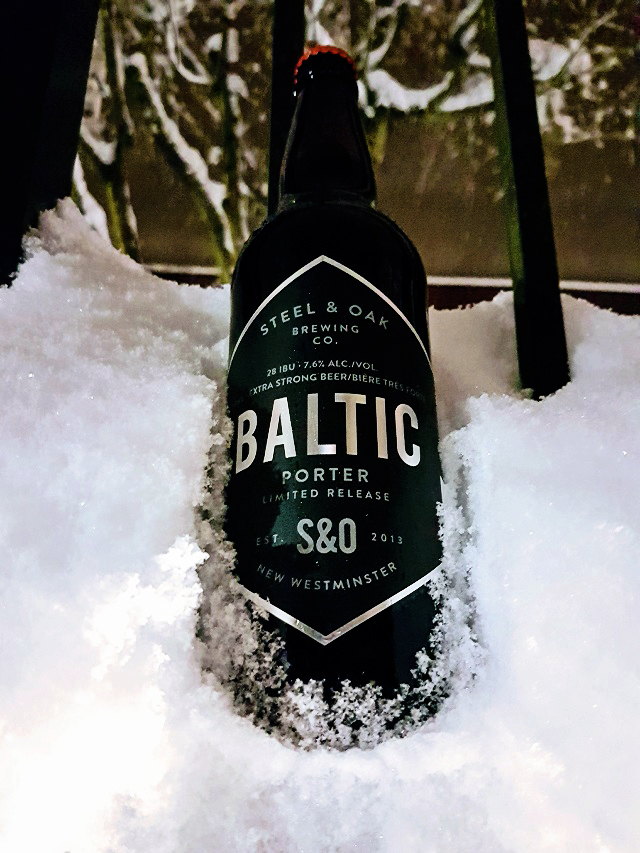
BC: S&O's three-year anniversary is in mid-2017, and by all appearances, S&O has been a great success. How has it been for you? Is S&O where you wanted or expected it to be at this point?
JF: To be honest with you, I don’t know where I expected it to be. When you start a business you kind of hope for the best, but plan for the worst. I hoped that within the first couple years we’d be an important part of the community; a space and company that would inspire other companies to open up in New Westminster, and I’d like to think that we’ve achieved that.
We’ve even achieved more than I thought we would in terms of where we sit in the overall status of BC Craft Breweries. Whenever literature or rankings come out (even though we try not to pay too much attention), we’re always near the top, and that’s a testament to the beer we make and it’s something I’m pleasantly surprised with. But we work really hard and we also take a lot of time with our beer to make sure it is exactly where we want it to be before we put it out there for people to try. With the amount of work that goes on behind the scenes, I’m happy where we are because we’ve put in a lot of work to get there.
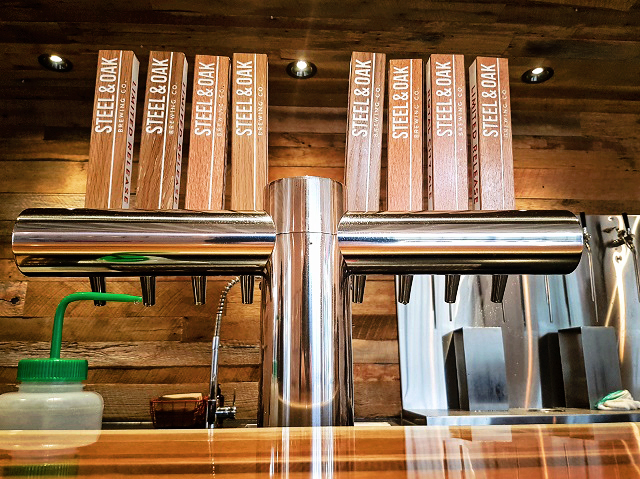
BC: Steel & Oak generated a lot of early buzz with high quality initial offerings, including the now-famous Smoked Hefeweizen, and it created some lofty expectations. Has it been tough to live up to the hype?
JF: It’s always tough to live up to hype. I think one of the biggest things in business, especially a business that has a consumable product and a lot of competition is "How do you stay in people’s minds? How do you continue to pump out interesting and new beers that are interesting enough that people want to try them, but are high quality enough that people want to have them again?"
It’s always difficult and I think it’s difficult for all breweries. When you come out with a few beers that people seem to really, really love, and hopefully they’ll continue to love and go back to them over and over again, you always feel pressure to make something that’s even better the next time. There’s always pressure but that’s something we thrive on. It pushes our brew team and everyone we have here to do better. I think with all the new breweries that are popping up, and some of them are getting some hype and notoriety, deservedly so, that makes us all want to be better.
I also think there’s a difference in generating hype in short bursts and creating products and beers that stand the test of time and will really carry your brewery into the future rather than just get people into the tasting room one weekend. It’s really about balancing the two.
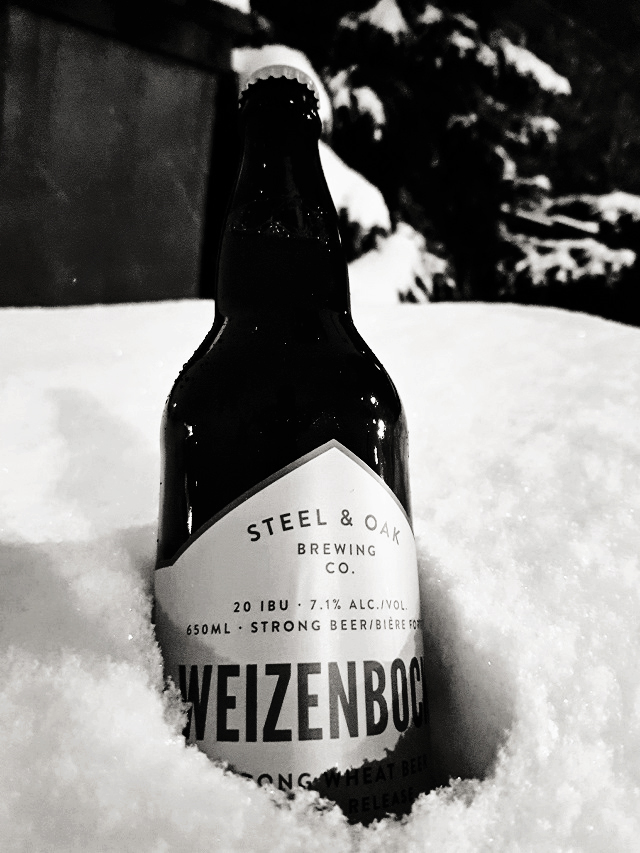
BC: S&O carved out a market niche for itself making a number of German-style beers. What prompted that decision? With the change in head brewers from Peter to Eric, do you intend to stay focused on that niche? Or does that change signal a philosophical shift? Will there be more focus on other styles in the future or do you intend to stay focused on German styles?
JF: We definitely went German stylistically in the beginning because our original brewer, Peter, was trained in Germany and that was his background. I always say to people that ask that question, you don’t tell an artist to paint differently than he’s been taught, you let him do what he’s best at. It’s an art. So we were never going to tell Peter he needs to make hoppy West Coast IPAs when in reality he was really good at making German-style lagers and wheat beers. To this day, those are the beers that we’re most noticed for.
The problem with German styles is there aren’t a lot of beers to make. In a west coast industry there’s always need to change and try something new. And from a creativity standpoint on our end, we always want to try new and different things. We’ve almost gone through the German book from beginning to end already just because the styles can sometimes be limiting. Even though you can work at one and perfect it for years and years, and some people work their whole careers and never perfect it.
For us, with Pete’s exodus, and Eric coming from more of a West Coast, homebrewer background, we’re going to have a unique mix. Eric was trained by Peter, so he definitely has the ability and desire to make really well balanced beers. Take those traditional European styles, bring them back and do them well. That being said, we have a young brew team as well that’s really excited about doing some of the new styles that are out there. For us, it’ll be important long term to make sure that we remember and show everybody that yeah, we’re known for well-balanced, European styles. We’re going to continue to put those out, and do them well, and even creatively different from time to time. But we’ll also create a line here and there of something different that can reach out to other people.
If you’re not always evolving a little bit, you’re going to get left behind. The most difficult thing to do in any business is to evolve while not losing who you actually are, and I think that’s something that — I won’t say we struggle with, because I think we have a good handle on it. But it’s definitely something that we’re very, very aware of.

BC: Following up on that last question, what would you say are the keys to success in this increasingly crowded marketplace? Do you see it becoming a market of specialized, niche breweries? How much room do you think there is to grow?
JF: It’s definitely getting crowded. I sat down with Matt Leslie who owns West Coast Canning yesterday; we use them for our Royal City Ale and Towers and Trains. I was saying to him that a lot of the market is getting crowded from a packaging perspective, as well as the liquor store shelves. A lot of times because of math. Because his business, which is great, we’ve used it, it’s really smart. But it’s allowed a lot of small breweries to package with no capital that they have to outlay themselves. So now anybody at any size can package their product, which is great, it allows a lot of smaller breweries to be able to follow their dream and make beer without a tonne of capital, which is the way it should be, and it allows them to get their product to market. But it does make things a little bit more busy out there.
I think that the niche breweries will always survive, just because of that. If you look at guys like Dageraad, even guys like us, we have a large enough customer base that can carry us on and allow us to do other fun things without too much risk. I think niche breweries, although we may never sell as much as a brewery just doing three-week IPAs, because it takes us six weeks to make the majority of our bestselling beers, it will probably provide longevity as long as we continue to do it well, market it properly, and make sure it’s still relevant.
It’s going to be difficult, I believe, for the breweries that come out with a Pils, Pale, and an IPA. There’s only so many restaurants and bars you can be on tap. And they’re all going to carry Fat Tug and they may not carry everybody else’s IPA. That being said, you talk to most breweries out there and their best selling beer is always their IPA. So who knows, the thirst for certain kinds of beers, maybe we don’t know the limit to it yet. There’s still plenty of people to convert, we get them in here every day. So I hope that the market continues to grow faster than the breweries open. But just like any business, there’s going to be some that open and some that fail, for numerous reasons, whether it’s quality, missed marketing opportunity, not being funded properly or not paying attention to cash flow. Just those regular business issues. We’ve been living in such a great time where you’re able to make those mistakes, I know we’ve made them, and the popularity of craft beer has been able to carry you through that. But I think in the next five or six years those days will be over, and that’s when you’re really going to see the good quality craft beer start to rise to the top, and we as customers (and I’m one) will really benefit.
So yeah, it’s getting crowded. But competition is a good thing.

BC: Your head brewer, Eric, was involved in a terrible accident in Portland last year. First off, how is he doing? Second, it led to you writing a really great post on your blog about camaraderie in the beer industry. What are your main takeaways from that experience?
JF: Eric’s doing much better. He’s still got a crutch and still has a long way to go, but he’s able to get around. He’s not going up ladders to dry-hop tanks or anything, but he’s here and he’s not in as much pain as he once was. So that’s wonderful, and it was definitely a shock when I got the phone call from his girlfriend.
We always knew the beer industry is a really great one in terms of camaraderie, and I think you can see that recently with what happened at Dageraad when the warm room ruined a bunch of their beer and the people stepped up.
When Eric went down I wrote a blog post just because I was emotional, I didn’t really know how to deal with it. Sometimes everyone has their own way of expressing emotion and for me it’s to write. So I wrote that and within minutes Don from Bomber, Brent from Four Winds, and the Dageraad boys — I can’t name everybody because there’s too many — all offered their support and help. And it made me realize how fantastic this industry is and how in most businesses, including the one I came from before, your goal is really to take out your competitors. Right now, and I hope it continues this way, we’re all trying to rise together and take market share away from the big guys and those fringe pseudo-craft breweries that aren’t really craft breweries. For us, we’re all part of the same team trying to do that, and it made me realize how great the community is.
It also made me realize how great our team here is. Our original brewer Peter, he’d left only three or four months earlier (he was travelling before he was going to start doing something different), he actually called me and offered to come back and work for us. Our two assistant brewers, Jackson and Chardonnay (his real name is Jordan, but we call him Chardonnay to avoid confusion), they stepped up and said we got this. They worked hard, they worked late, they worked well over their 40 hours a week and it made them closer as a team. It made them more skilled. And it brought everyone together. Sometimes when bad things happen you take some good from it.
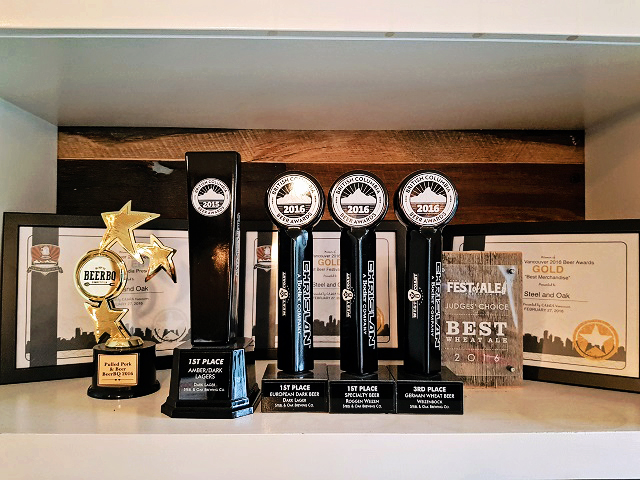
BC: What's your favourite S&O beer(s)? (Also, are there any S&O beers that you think don't get the love they deserve?) What's your favourite non-S&O beer(s)?
JF: Yeah, it’s the same beer. My favourite beer that we do is the Dry-Hopped ESB, soon to be called West Coast ESB because no one knows what an ESB is and it's the most difficult beer to sell. It’s always been my favourite; whenever I give it to other brewers they love it and say, "This is awesome, it’s got a great nose, super aromatic." You could probably call it a pale ale and sell more, but it’s not. It’s definitely got an ESB backbone. It’s beautifully balanced, it’s got a nice, refreshing bitterness. It’s only 4.6 percent so I could have a couple of them. It’s a beautiful beer that we always keep improving and tweaking and changing hopping techniques to give it a more juicy and aromatic nose. I love it. Seventy-five percent of what I drink from us will be that beer, and it definitely does not get the notoriety it deserves.
You can ask Central City about that; they had an ESB that went to a Copper Ale. It’s just not a beer that sells that well. But it’s not just that it doesn’t sell, it definitely has its own market, and people that try it say, "That’s awesome." But IPA lovers don’t look at an ESB, they want an IPA. And then customers that like something hoppy, they hear ESB and they’re like, “Extra Special Bitter? I don’t want that, it sounds really bitter.” So it’s just fighting a losing battle.
Another brewer favourite is our Roggen Weizen. Try and sell Roggen Weizen. Nobody knows what a Roggen Weizen is outside of your real craft beer consumer. We’re large enough where we need to sell a little more beer than to just the beer nerds. We always had a really tough time when people would have it and go, ‘This is delicious, I want more of this." It’s just like a maltier hefe, right. It got to the point where we dialed back how much we were brewing this past October. We dialed it back, and then it won first place at the BC Beer Awards for Experimental Beer. Which is funny, because it’s a very old style. And then all of a sudden it was just gone, and it was like oh, we should have made more of that. So we always like to say awards aren’t all that important, but to be fair, they do affect your sales. And after that, people started to know what a Roggen Weizen is.
Both those beers, ESB especially, we’ve even noticed that a few more breweries are brewing it. And I hope that’s the case, because the more breweries that brew it, that means it gets into more people’s hands, and if they brew it well people will say, "You know what, I really like this style."
My favourite non-S&O beer, it depends what mood I’m in. Gary Lohin has a great quote where he says his favourite beer is the one that’s currently in his hand, which is awesome because there’s so many great beers out there. For something hoppier, I really dig the Steamworks Flagship IPA. It’s got that East Coast cloudiness, but it’s got enough West Coast bitterness that I find it very refreshing and it’s something I can crush quite a few of.
I’m also really digging the Blodberg from Four Winds. That beer is really delicious, those guys just pound out great beers.
If our team goes out as a group, and Burnabarian, if it’s on tap, 9 times out of 10 that’s ordered. It’s just a super nice, easy drinking beer. It’s really delicate and well put together. Those guys know exactly what they’re doing. I’d say that’s definitely a go-to for me more often than not when we’re out and about.
I know that’s three, and I could keep going ... but that’s the awesome thing. There’s so many great beers being brewed right now, and different styles too. It’s hard to pick just one, it all depends on what kind of mood you’re in, which is just wonderful.
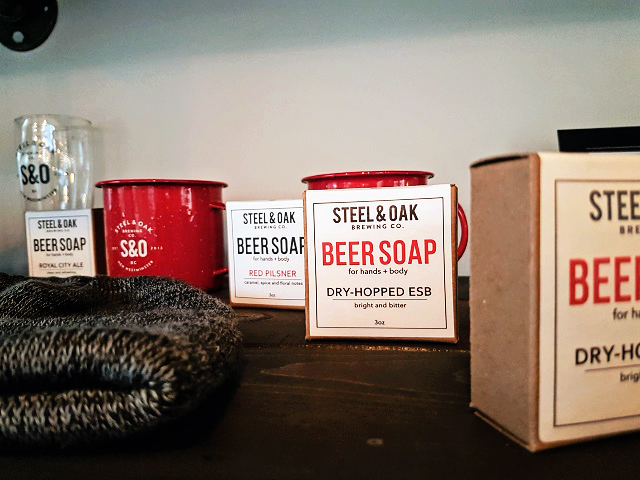
BC: Lastly - What's next? Where do you see S&O going in the next few years?
JF: S&O right now, our capacity will stop when we run out of room in our location. At the end of March, we’ll be getting two more 100-hectolitre fermentation tanks and one more 50-hectolitre brite tank, and then we’ll have no more space in our facility. It’ll take a little while to scale up to all that capacity, but I would suspect by the end of 2018 we won’t have any capacity left in our current facility.
We really like it here, it’s got good walking distance to the Quay. It’s funny, when we first moved in here we thought, "Oh this funny spot near an overpass." But as far as light industrial zoning, which is what you need in New West, it’s a really great spot. Probably the best you can get.
We’re always on the lookout for new spaces, but New West doesn’t have a great pool of light industrial spaces in good locations.
I would say that our goal is to continue to grow, and to grow locally.
We’re starting to sprinkle into Alberta a little bit, but there’s still a lot of room for us to grow in the BC market, so we’ll continue to do that. We’ll continue to innovate new brands, we’ll switch a couple styles into different packaging formats. So you’ll see a few different things from us in the next year.
But long term, we’ll continue to look for a new space to supplement this one, and if we don’t find it in New West, we’ll definitely be staying here — we’ll just find more efficient ways to work. We’ll continue to dial in the beers we have, and we’ll be happy with where we’re at and just continue making small adjustments to improve.
So it’s all going to come down to space. We’re always looking to do something different, my business partner and I, you never know what you’ll see coming from us. And to be entirely honest, sometimes we don’t even know, which keeps it interesting and exciting.
-----
Huge thanks to Jorden Foss for taking the time to speak with me on these topics and for speaking so candidly.
Still Thirsty?
Check out all our Canada’s Craft Beer articles.
Todd covers Atlantic Craft Beer
David covers Ontario and Quebec Craft Beer
Bryan covers BC Craft Beer
Bryan Clegg is the beer columnist for VanFoodies.com. Bryan has a wide and accommodating palate; whether it’s a tasty low-IBU ale or a ride on the IBU train to Hop Country, he’s happy to drink and share a story about the ride. Follow @vanfoodies on Twitter, Instagram or Facebook.






Leave a Reply